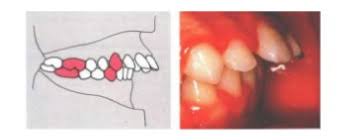In this modern era, the need and demand for orthodontic treatment is increasing. The public is becoming more and more aware of tooth irregularities, especially with facial deformities due to the inharmonious jaw relationship that will significantly affect appearance. Moreover, irregular teeth and harmonious jaw relationships will substantially affect the chewing, digestion and articulation systems.
Occlusion is maximum contact from the relationship between the maxillary teeth and the mandibular teeth during the mandibular resting position. In contrast, all kinds of deviation from ideal occlusion are called malocclusion. Prevalence of malocclusion is still quite high in various countries.
In Indonesia, the prevalence of malocclusion reached 80% of the population. At the same time, a research in Seoul in 2012, showed that the prevalence of malocclusion was quite high, about 50.2% of the total population. From the population over 19 years old, 33.6% had class II malocclusion, and 23.6% had class III malocclusion. Patients who required tooth extraction reached 60.4%, and patients who required orthognathic surgery were 6.9%.
Furthermore, the results of Baral’s research showed that 61.3% of Aryan races and 64% of Mongoloid races had class I malocclusions. Class II malocclusion of division 1 was 25.2% of Aryan races and 17.9% of Mongoloid races. While class II malocclusion of division 2 had lower prevalence about 5.3% of the Aryan race and 2.5% of Mongoloid race, and class III malocclusion was 8.2% of the Aryan race and 15.6% of Mongoloid race.
Malocclusion may be caused by a dental or skeletal misalignment. Dental malocclusion is classified according to the first permanent molars relation. Angle’s malocculsion classification method is still used at present-day considering its convenient to use. Moreover, skeletal malocclusion can be determined by various cephalometric analyzes. Pattern of skeletal class II malocclusion can determine the facial profile and dental characteristics. Patients with skeletal class II malocclusions, can be assured to have pattern of dental class II malocclusion. However, patients with dental class II malocclusion cannot be assured to have pattern of skeletal class II malocclusions, but patients with class II dental malocclusion cannot be ascertained to have a class II skeletal malocclusion pattern.
Clinically, skeletal class II malocclusion cannot determine whether the mandibular is too far back to the maxilla or maxilla too far at the front to the mandibular. The results of the study still cannot reveal the dentofacial characteristics of class II division 1. Opinions of the preceeding orthodontist are also ambiguous and even contradictory.
Mc Namara concluded that mandibular retrusion was the main characteristic of class II malocclusion and rarely found in protrusion maxillaries. In contrast, Rothstein says the mandible is often found in the range of characteristics of normal position, size, and shape, while Rosenblum found that 56.6% of subjects with class II malocclusion had maxillary protrusion and only 26.7% had mandibular retrusion.
Knowledge about the variation of dental relation towards the skeletal patterns in individuals with good occlusion, will support to determine inharmonious of malocclusions. Thus it is necessary to understand the variation of skeletal pattern relation towards the dental pattern to reveal the complexity of a malocclusion,where the dental condition can affect skeletal condition that getting worse. Based on this reasoning, it is expected to understand the relation between dental and skeletal pattern of patients with skeletal class II malocclusion.
In this research, pattern of skeletal class II malocclusion and dental characteristics were measured. The measured patterns of dental characteristics include: dental arch shape; overjet; overbite; shape, width, and length of the dental arch; and also inter-premolar and molar arch height. The highest frequency of maxillary denture arch shape was v-shape with 52.3%, followed by omega shape with 30.8%, square shape with 12.3%, and parabolic shape with 4.6%.
The same result was found in the lower jaw, the highest fequency of denture arch shape was v-shape with 55.4%. While the square shape with 23.1%, omega shape with 20% and parabolic shape with 1.5%. Normal parabolic arch shaped is quite rarely found in skeletal class II malocclusion, because narrowing of the anterior dental arch can be found more in the maxilla and mandibular by the researchers. There was a correlation between patterns of skeletal class II and dental characteristics, SNA was positively correlated with maxillary interpremolar width and SNB was negatively correlated with mandibular interpremolar height.
There are various skeletal and dental characteristics that correlate with Deutromalayu race (Javanese ethnicity) which makes dentocraniofacial complexity in class II skeletal malocclusion. (*)
Author: I Gusti Aju Wahju Ardani
Details of this research available at:
http://www.jidmr.com/journal/wp-content/uploads/2019/12/30.D18_791_Ardani.pdf





